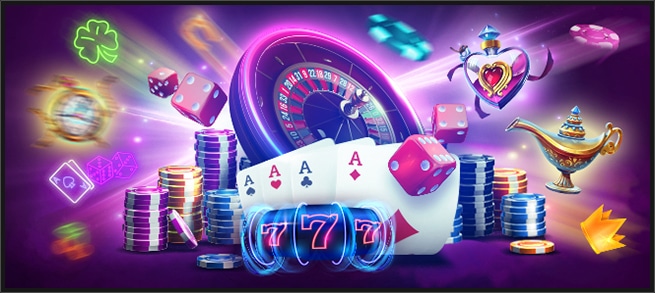In what way Gaming Establishments Use Shade and Layout to Entice Gamers

Within the vibrant and exciting world of casinos, where fortune and strategy intertwine, hues and design play a key role in attracting gamblers. As soon as visitors step into a casino or access a gaming platform, they are immersed in a sightly feast that captures their attention and entices them to discover further. 8day Bright colors, captivating graphics, and innovative layouts are carefully crafted to create an atmosphere of excitement and expectation, ultimately improving the gaming encounter.
While players navigate through the ever-changing landscape of casino games, they come across a range of designs that not only serve visual purposes but also affect emotions and decision-making. Colors like scarlet and gold symbolize wealth and fortune, while soothing blues and emeralds can create a much tranquil environment. Understanding how these elements work together allows casinos to create an inviting and energizing atmosphere that encourages players to interact with the games, spend additional time at the tables, and boost their overall enjoyment.
The Science of Color in Gambling Games
Color plays a crucial role in the design of gaming experiences, shaping players' feelings and actions. Bright and vibrant colors, such as scarlet and yellow, are often used to stimulate excitement and draw notice. These shades create a sense of urgency and vitality, encouraging gamblers to involve themselves more enthusiastically with the game. By strategically selecting hues, developers aim to inspire emotions of pleasure and excitement, which can enhance the complete gaming experience.
Different hues also have psychological connotations that can affect how players perceive their possibilities of success. For case, emerald is commonly associated with luck and prosperity, making it a popular choice in activities like the roulette wheel and poker tables. This connection can result participants to feel more positive and self-assured in their gameplay, ultimately motivating them to stake more. Comprehending these links allows game designers to create environments that enhance player satisfaction and engagement.
Furthermore, the interface of gaming interfaces often employs color gradients and opposing shades to guide players' actions. For instance, winning results may be highlighted with striking, differing shades, creating a visual cue. This technique reinforces positive outcomes and supports repeated participation. By leveraging color psychology, gambling establishments can develop games that not only captivate gamblers but also maintain them involved and dedicated in their gaming experience.
Design Elements that Engage Gamers
The aesthetic appeal of gambling games is primarily influenced by the use of vibrant colors. Lively and contrasting colors are strategically chosen to create an inviting atmosphere that captures interest. For instance, crimson and golds often signify luck and prosperity, which is why they are common in the palettes of slot machines and game surfaces. These colors not only draw players in, but they also evoke emotions associated with thrill and expectation, enhancing the total gaming experience.
In parallel to color, the aesthetic and organization of gambling games play a crucial role in player attraction. Games are designed to be user-friendly, ensuring that players can easily understand the guidelines and gameplay. Accessible interfaces, along with captivating graphics and motion, help maintain player interest and promote extended play sessions. The physical elements, such as the texture of the buttons and the sounds of the games, also add to a holistic sensory experience that keeps players immersed.
Finally, thematic elements in game design can greatly influence player choice. Many casino games are inspired by popular culture, myths, or exploration motifs, incorporating symbols and characters that resonate with players. These themes create a sense of immersion and relatability, making each game feel distinct. When players feel a bond to the theme, they are more likely to choose that game over others, leading to higher participation and excitement within the gambling environment.
Case Studies: Successful Gambling Game Designs
One prime example of successful casino game design is the well-known slot machine series based around hit movies. Games such as those based on the Wizard of Oz and Game of thrones utilize bright colors and top-notch graphics to immerse players in well-known narratives. The application of dynamic visuals and engaging sound effects captures the interest of players, establishing an psychological connection to the theme. This strategy not just encourages longer play but also enhances the overall gaming experience, resulting in increased player retention.
Another successful case is the application of color in table games like blackjack and the wheel. Casinos often design these games with deep reds and greens, colors traditionally linked with luck and wealth. For instance, the green felt on a blackjack table provides a relaxing effect, while the red accents in roulette invite excitement. This thoughtful use of color helps to foster an inviting atmosphere that stimulates players to engage, fulfilling their psychological impulses and enhancing their enjoyment.
Finally, social casino games that feature community features and vivid, colorful designs have achieved remarkable success in engaging players. Games like Zynga Poker and Slotomania leverage bright colors and playful animations to establish an inviting online environment. The inclusion of leaderboards, social sharing options, and in-app rewards promotes competition and community, pulling players in for longer sessions. Such designs merely make the games visually enticing but also emphasize community engagement, a key factor in player retention and engagement within digital casino environments.
